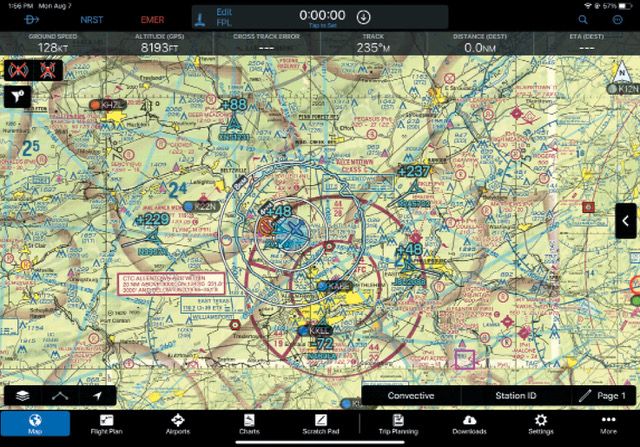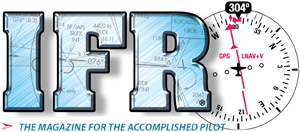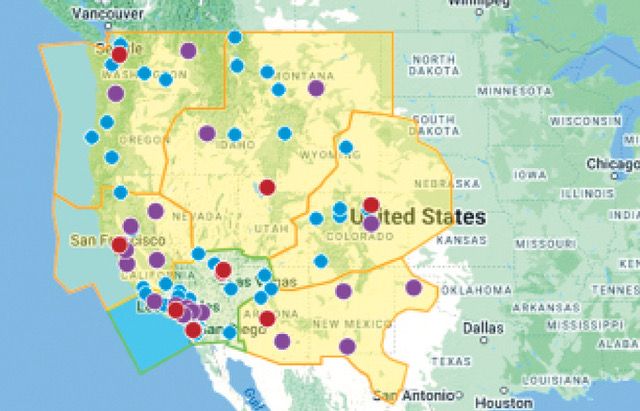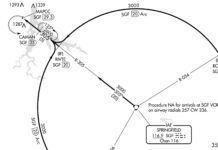You’ve built your sim and you have been flying it a lot, improving your instrument proficiency and your overall confidence in the airplane. You’ve even deployed some of the devices we’ve talked about previously to give you a more realistic instrument panel. Yet, something is missing.
Aviate, Navigate, Communicate
Effective ATC communication is a critical skill in instrument flying. The use of proper phraseology as well as the ability to effectively negotiate with ATC can literally be a matter of life or death. But like all things with aviation (and life, really), the only way to get good at it is, well, practice. And ideally, that practice would be with a real-life controller until (when?) SkyNet takes over.
Probably the biggest network, both in terms of sheer members and coverage area, is VATSIM, a completely free, volunteer-based organization that provides ATC services for flight sims. But because it is free, its service, both in quality and coverage, can be spotty.
So even if you do find coverage for the airspace of interest, the way the network operates is much different than what you would expect; the network uses this hierarchical overlap system whereby a TRACON controller operating on one frequency will be also responsible for all the underlying airspaces underneath it on that same frequency.
Yes, awkward, but you get used to it. And because a controller can log off at any time, your best bet when flying on VATSIM is to fly in a scheduled event so you know both coverage and traffic are guaranteed.
A better alternative for serious training would be PilotEdge, a paid commercial professional ATC service for flight sim. And by professional I mean a service that not only religiously adheres to the “.65” (7110.65), with respect to phraseology and procedure, but also tries to mimic every little gory detail of the airspaces in which it covers.
Controllers are available 15 hours a day, seven days a week, except Christmas and Thanksgiving. Its only real drawbacks are a) it’s not free and b) the network only covers the western portion of the U.S. With that said, the network provides the most realistic ATC experience of them all and has a very active online community too, chock full of real-world pilots, controllers, and CFIIs eager to answer your questions or help you get started.
If you do decide to dip your toes in PilotEdge waters then I suggest signing up for five free hours and going through their CAT or I-Ratings program. This is highly recommended.
See and Avoid
Before the FAA made ADS-B a way of life, the flight sim community recognized its utility almost immediately, with plug-ins like LiveTraffic that directly inject real flying aircraft into your sim. Granted, the setup can be a little involved depending on how you source the ADS-B data.
One way is to build your own ADS-B receiver using something like FlightAware’s PiAware, and then register that device with ADS-B Exchange to obtain an API key you can use with LiveTraffic. Another option is to use ADSBx Flight Sim Traffic service, which has both free and paid tiers to stream ADS-B data directly in as well.
However you source the data though, the end result is you flying the virtual skies with actual traffic generated in real-time. Note: You will occasionally see planes do unholy things to the laws of physics, but it’s still a very good way to practice see and avoid in the sim.
Your EFB
Both Garmin Pilot and ForeFlight natively support X-Plane right out of the box. The way it works is X-Plane broadcasts the state of the sim through your local network while your EFB listens for these state updates in the app. The net result is that your plane’s position and speed will be shown on your EFB’s maps and chart overlays just like in real-life.

There are a few caveats though once you set this all up: First, it’s not like Garmin Connext, where the sim’s built-in avionics stack is in lock step with your EFB, i.e., if you activate an approach within the sim it doesn’t automatically activate on your EFB. Same is true for flight plan setup too. Nor does it sync custom weather settings.
So again, if you set up an overcast layer at 3000 feet, don’t expect gray fluffy clouds to be suddenly drawn in your EFB. But overall, connecting your favorite EFB is a fantastic way to increase your virtual situational awareness when practicing approaches.
Next Steps
There are so many aspects to flight simulation, it is nigh impossible to cover them all in a few short articles. Other avenues of exploration include incorporating in-cockpit checklists using a plugin like XCheckList to adding a full fledge virtual co-pilot that shouts with MiraCheck. Or, even consider buying a pair of VR goggles for a truly immersive experience. The sky is literally the limit on what you can do with your simulator.
If you’ve read all of these “Build Your Own Sim” articles up to this point, then maybe you’re under the impression that your setup at home can far surpass what you use to log currency in most FAA approved flight sims. And you would be exactly right. It is no secret that we are living in a golden age of flight sim where for a modest cost you can build an excellent platform with which you can stay proficient.
I hope this series has at least inspired you to investigate building your own home setup or expanding the one you already have.
Alexander Sack pretends to be a Senior Software Engineer who wrangles a lot of big data for a living. He’s actually an instrument-rated commercial pilot who studies Jepp charts, Skew-T diagrams, and enjoys simming.





